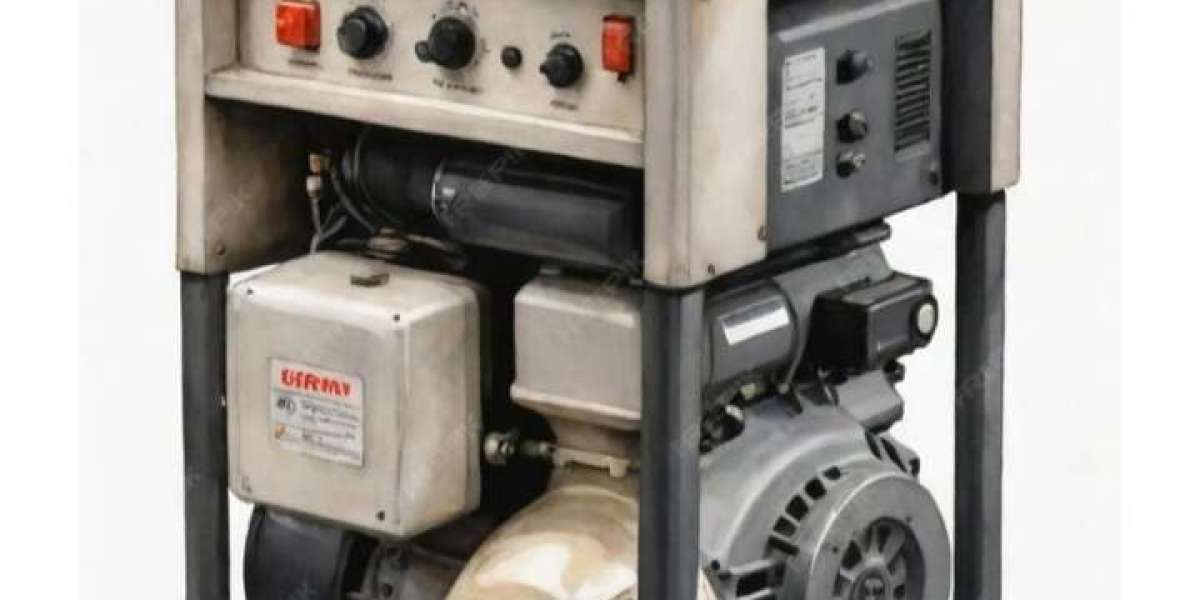Understanding Basic Generators
Generators are devices that convert mechanical energy into electrical energy using electromagnetic induction. They are fundamental components in a wide range of applications, from powering homes to providing backup energy during outages. This article will explore the basic principles of how generators work, their key components, and the types of generators commonly used.
how generator works by outfitting mechanical energy to make a changing attractive field, which thus produces electrical energy
- The Principle of Electromagnetic Induction
The core principle behind generators is electromagnetic induction, discovered by Michael Faraday in the 1830s. This principle states that a change in the magnetic field within a closed loop of wire induces an electric current in the wire. This can be broken down into a few key concepts:
1.1 Magnetic Field
A magnetic field is a vector field that surrounds magnets and electric currents. It has both a direction and magnitude and is responsible for the force experienced by other magnets and current-carrying wires. In a generator, a magnetic field is essential for inducing current in the coil.
1.2 Induction
Electromagnetic induction occurs when the magnetic field through a coil of wire changes. This change can be achieved by moving a magnet near the coil or by rotating the coil in a stationary magnetic field. According to Faraday’s Law of Induction, the induced electromotive force (EMF) or voltage is proportional to the rate of change of the magnetic flux through the coil.
1.3 Faraday’s Law
Faraday’s Law of Induction is expressed mathematically as:
\[ \text{EMF} = -\frac{d\Phi_B}{dt} \]
where \( \Phi_B \) is the magnetic flux, and \( \frac{d\Phi_B}{dt} \) is the rate of change of the magnetic flux. The negative sign indicates that the direction of the induced EMF opposes the change in flux (Lenz's Law).
2. Key Components of a Generator
Generators are composed of several critical components that work together to convert mechanical energy into electrical energy. Understanding these components helps in grasping how generators function effectively.
2.1 Rotor
The rotor, or the rotating part of the generator, is connected to a mechanical source of energy such as a turbine or an engine. It is responsible for creating a rotating magnetic field. In many generators, the rotor is an electromagnet, but in some designs, it may be a permanent magnet.
2.2 Stator
The stator is the stationary part of the generator and contains the coils of wire through which the induced current flows. The stator’s coils are positioned within the magnetic field generated by the rotor. The interaction between the rotating magnetic field and the stationary coils induces an electric current in the coils.
2.3 Commutator
In direct current (DC) generators, the commutator is a rotating switch that reverses the direction of current flow in the rotor winding. This ensures that the output current remains unidirectional. In alternating current (AC) generators, this function is handled by the AC output itself, so no commutator is needed.
2.4 Brushes
Brushes are conductive materials that maintain electrical contact between the rotating commutator and the stationary external circuit. They are typically made of carbon or graphite and are crucial for transferring the generated electricity from the rotor to the external circuit.
2.5 Field Winding
Field winding are coils of wire located on the rotor or stator, depending on the design. These winding are energized by an external power source to create the magnetic field necessary for electromagnetic induction. In some generators, these winding are part of the rotor and are called rotor winding; in others, they are part of the stator and are known as stator winding.
3. Types of Generators
Generators come in various designs and configurations, each suited to specific applications. Here, we’ll look at the most common types of generators.
3.1 Alternating Current (AC) Generators
AC generators, also known as alternators, produce alternating current. They are widely used in power plants and for generating electricity in homes and businesses. The primary advantage of AC generators is their ability to easily transform voltage levels using transformers, making them suitable for long-distance power transmission.
3.1.1 Synchronous Generators
Synchronous generators operate at a constant speed, and their output frequency is directly related to the rotor speed and the number of poles. They are commonly used in large power plants where stability and efficiency are crucial.
3.1.2 Asynchronous Generators
Asynchronous generators, or induction generators, do not operate at a constant speed. They are typically used in wind turbines and other applications where speed variation is common. Their output frequency depends on the rotor speed relative to the stator’s rotating magnetic field.
3.2 Direct Current (DC) Generators
DC generators produce direct current, which flows in a single direction. They are less commonly used in modern power systems but are still found in certain applications such as battery charging and small-scale electrical systems.
3.2.1 Series Generators
In series generators, the field winding are connected in series with the armature winding. They are used in applications where a constant voltage is less critical, and the output current needs to be high.
3.2.2 Shunt Generators
In shunt generators, the field winding are connected in parallel with the armature winding. This configuration allows for a stable output voltage and is commonly used in battery charging and small power supplies.
3.2.3 Compound Generators
Compound generators combine both series and shunt winding to provide a balance between high starting current and stable voltage. They are used in applications where both characteristics are needed.
4. Applications and Practical Considerations
Generators have a wide range of applications, from powering homes and industries to serving as backup power sources. Understanding their practical considerations is essential for effective use.
4.1 Power Plants
In power plants, generators are used to convert mechanical energy from turbines (driven by steam, water, or gas) into electrical energy. These generators are typically large AC generators designed for high efficiency and stability.
4.2 Backup Power
Generators are also used as backup power sources for homes and businesses during electrical outages. Portable generators, often running on gasoline or diesel, provide temporary power during emergencies.
4.3 Renewable Energy
Renewable energy systems, such as wind turbines and hydroelectric plants, often use generators to convert the mechanical energy from natural sources into electrical energy. In these systems, the generator must be designed to handle variable input speeds and conditions.
4.4 Maintenance and Safety
Regular maintenance is crucial for ensuring the efficient operation and longevity of generators. This includes checking the fuel levels, inspecting the mechanical components, and testing the electrical output. Safety considerations involve proper ventilation, handling of fuel, and protection from electrical hazards.
Conclusion
Generators are essential devices in modern society, converting mechanical energy into electrical energy through the principle of electromagnetic induction. By understanding their key components, types, and applications, we can appreciate their role in providing reliable power for various needs. Whether in power plants, renewable energy systems, or as backup power sources, generators play a crucial role in our daily lives and technological infrastructure.




